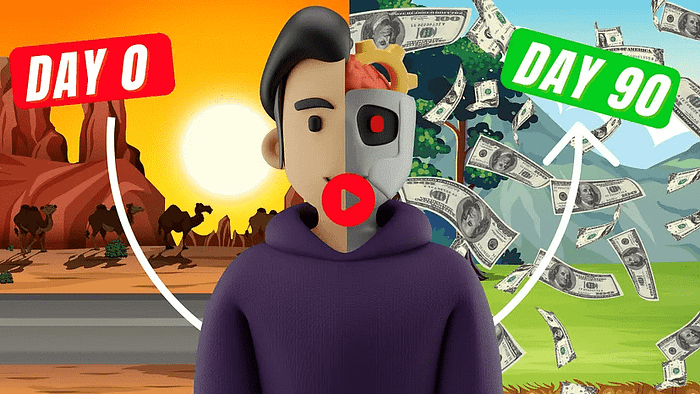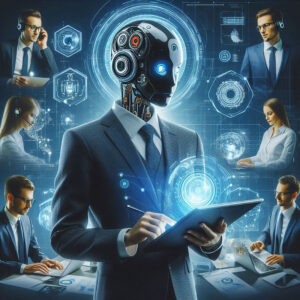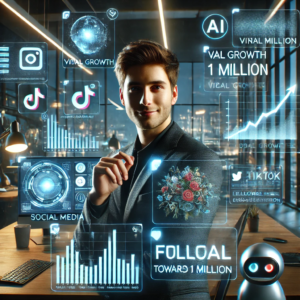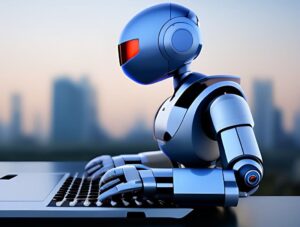AI vs Human Creativity: Can Artificial Intelligence Replace Writers?
Vivid colors swirl across a canvas, a haunting melody fills the air, and words dance on a page, pulling you into a story that feels alive—AI vs human creativity is no longer a distant dream but a reality unfolding before my eyes. As I stand as an observer, watching this fascinating interplay between technology and the human spirit, I’m struck by the question that echoes through creative circles: can machines truly step into the shoes of writers, artists, and musicians? This journey takes us deep into a world where artificial intelligence crafts breathtaking works, challenging everything I thought I knew about what it means to create. It’s not just about tools or algorithms; it’s about the essence of imagination itself. Today, I’m here to guide you through this exploration, peeling back the layers of AI’s capabilities and holding them up against the raw, soulful spark of human ingenuity. We’ll wander through art, music, and writing, marveling at what machines can do while uncovering what makes us uniquely human. The stakes feel high—could AI replace the creators I’ve admired for so long? Let’s dive in and find out together.
We strongly recommend that you check out our guide on how to take advantage of AI in today’s passive income economy.
Table of Contents
AI-Generated Writing
As I sit down to examine AI-generated writing, I’m immediately captivated by the sheer power of algorithms like GPT-3, which churn out paragraphs that feel eerily human. I watch the process unfold: a machine sifts through vast oceans of text—books, articles, blogs—learning patterns, syntax, and tone, then spins them into something new. The result is a story or essay that flows smoothly, with sentences that connect logically and ideas that seem polished. It’s impressive, almost magical, like watching a loom weave threads into fabric without a human hand in sight. I can see why some might think this could rival human writers—the efficiency is unmatched, and the output can mimic styles from Shakespeare to modern bloggers. But as I dig deeper, I notice something missing. The words lack the heartbeat of lived experience, the subtle tremble of emotion that comes from a writer who’s felt joy, pain, or longing. AI vs human creativity here feels like a polished shell versus a beating heart—it’s functional, but not alive.
I think of Jane Austen, whose Pride and Prejudice isn’t just a collection of elegant sentences but a tapestry woven with wit, social commentary, and the quiet ache of human connection. When I compare her work to an AI-generated tale, the difference is stark. The machine’s story might have a beginning, middle, and end, with characters and conflict neatly arranged, but it doesn’t carry the weight of Austen’s insight into love and society. Her words linger because they’re born from a mind that observed, felt, and understood the world around her. AI struggles to replicate that depth—it can’t draw from a personal memory of a rainy afternoon or the sting of rejection. Yet, I see potential shimmering beneath the surface. Writers could use AI as a partner, a spark to ignite new ideas when the blank page feels daunting, blending machine precision with human soul. In this dance of AI vs human creativity, the machine offers a hand, not a throne.
AI in Art
Stepping into the realm of AI in art, I’m greeted by a gallery of images that stop me in my tracks—vivid landscapes, abstract swirls, and portraits so lifelike they could whisper secrets. Tools like DeepArt and DALL-E have mastered the craft, analyzing millions of paintings, photographs, and sketches to learn the language of color, form, and style. I watch as an algorithm takes a simple prompt—“a starry night over a village”—and transforms it into a canvas of glowing blues and yellows, dotted with rooftops and a sky that seems to pulse. The result is stunning, a visual feast that could hang in a modern gallery. It’s easy to see why AI vs human creativity sparks debate here—these creations rival the technical skill of seasoned artists. But as I gaze longer, I wonder: what’s beneath the surface? The image dazzles, but it doesn’t whisper a story of its own making.
I turn my thoughts to Vincent van Gogh, whose Starry Night isn’t just a pretty picture but a window into a tormented, brilliant mind. The thick, swirling brushstrokes carry his anguish, his awe at the universe, his fragile hope—I can almost feel the chill of the night air he painted. The AI piece, while beautiful, feels like a mirror reflecting what it’s been taught, not a soul reaching out. Human artists pour their lives into their work—every stroke a memory, every shade a feeling—while AI builds from data, not experience. Yet, I see a bridge forming. Artists could wield AI as a tool, letting it sketch initial concepts or blend styles they’d never have dreamed of alone. In this space, AI vs human creativity isn’t a duel but a duet, amplifying what’s possible while leaving the emotional core firmly in human hands. The canvas expands, but the heartbeat remains ours.
Human vs AI Content
When I compare human vs AI content head-to-head, the contrast sharpens into focus, like sunlight breaking through a fog. I read a poem crafted by a human—a tangle of metaphors about loss, with lines that twist and turn like a river carving through stone. It’s messy, imperfect, but it grips me, pulling me into the poet’s world of grief and resilience. Then I turn to an AI-generated poem—clean, rhythmic, with imagery that sparkles like polished glass. It’s lovely, undeniably so, but it feels distant, as if I’m admiring it through a window rather than stepping inside. The human piece breathes with intention, every word a choice born from a life lived, while the AI’s work shines with precision but lacks a pulse. AI vs human creativity here is a tale of depth versus dazzle, soul versus surface.
I think of Beethoven’s Moonlight Sonata, a piece that unfolds like a quiet confession, its notes heavy with longing and introspection. When I listen to an AI-composed symphony from tools like AIVA or MuseNet, I’m struck by its complexity—melodies weave together seamlessly, harmonies rise and fall with mathematical grace. It’s music that could fill a concert hall, but it doesn’t reach into my chest and tug at my heartstrings the way Beethoven does. The human touch carries a richness that AI struggles to mimic—it’s the difference between a photograph and a memory. Yet, I see musicians and writers leaning into AI, using it to explore uncharted sounds or break through creative blocks. This isn’t a replacement but an enhancement, a way to stretch the boundaries of human vs AI content. The machine builds the scaffolding; we fill it with life.
Creativity in AI
Delving into creativity in AI, I find myself marveling at the sheer scope of what these systems can achieve—art, music, and stories born from lines of code rather than flesh and blood. I watch an AI like MuseNet compose a piece that shifts from classical to jazz, blending genres with a fluidity that feels almost intuitive. It’s not just imitation; it’s invention, a leap into something new that surprises me. The creativity in AI feels boundless—feed it a prompt, and it spins out possibilities faster than any human could dream. I can’t help but admire the ingenuity of the programmers who built these tools, crafting machines that seem to dance on the edge of imagination. AI vs human creativity here feels less like a competition and more like a new frontier, a space where innovation thrives.
But as I linger on this thought, I notice a subtle catch—the creativity in AI is tethered to what it’s been given, a vast but finite pool of human-made data. It remixes, reimagines, and recombines, but it doesn’t dream from scratch the way a child might invent a world from a puddle and a stick. I think of a painter staring at a blank canvas, not just recalling techniques but feeling the pull of an emotion that demands expression. AI doesn’t feel that pull—it calculates, predicts, and produces. Still, its role as a collaborator excites me. I see artists using AI to experiment with bold new forms, writers tapping it for fresh perspectives, musicians finding unexpected chords. Creativity in AI isn’t a standalone force but a mirror that reflects and amplifies our own. It’s a tool, not a soul, and that distinction keeps the human spark at the center.
AI Storytelling
Finally, I turn to AI storytelling, where the line between machine and human blurs in fascinating ways—I’m drawn into a narrative crafted by an algorithm, words flowing like a river over smooth stones. I read a short story generated by GPT-3: a tale of a lost astronaut drifting through space, with vivid descriptions of starlight glinting off a cracked helmet and the silence pressing in like a living thing. It’s gripping, cohesive, and I’m tempted to lose myself in it. The technical prowess is undeniable—AI storytelling can build worlds, craft dialogue, and pace a plot with a skill that rivals many novice writers. AI vs human creativity in this arena feels tantalizingly close, as if the machine might one day sit beside us at the writer’s table. But then I pause, searching for the soul beneath the surface.
I think of Toni Morrison’s Beloved, a novel that doesn’t just tell a story but unearths a raw, aching truth about slavery, love, and survival—every sentence pulses with her voice, her pain, her humanity. The AI story, while compelling, feels like a beautifully constructed shell—lacking the lived wisdom that Morrison pours into her work. Human storytelling draws from the messy, unpredictable well of experience—moments of triumph, heartbreak, and quiet revelation that no dataset can replicate. Yet, I see writers embracing AI storytelling as a co-creator, using it to brainstorm twists or flesh out drafts when inspiration falters. It’s a partnership that blends efficiency with emotion, structure with spirit. AI vs human creativity here isn’t about one overtaking the other—it’s about weaving them together into something richer, a tapestry where the human thread still shines brightest.
Broader Implications of AI in Creative Fields
Stepping back, I see the broader implications of AI in creative fields unfolding like a vast horizon—both thrilling and daunting, a landscape where human ingenuity meets machine potential. I envision a painter sketching alongside an AI that suggests bold new compositions, a musician layering human vocals over an AI-crafted beat, a writer polishing a manuscript with AI’s sharp eye for grammar and flow. The synergy is electric, sparking works that push boundaries and redefine genres. AI vs human creativity becomes a collaboration that boosts productivity, uncovers fresh ideas, and challenges me to rethink what creativity even means. But shadows linger on this horizon—questions about jobs, ownership, and the soul of art itself.
I reflect on history: the camera didn’t kill painting but birthed movements like Impressionism; the printing press didn’t silence storytellers but spread their voices wider. AI, too, feels like an enabler, not an eraser—augmenting human creativity rather than erasing it. Yet, I hear whispers of concern: could AI flood the market with cheap content, devaluing the painstaking craft of human creators? Who claims the rights to a song or story born from code? I see ethical threads weaving through this—how do we balance AI’s power with the human essence that makes art resonate? The future, I realize, hinges on collaboration, not domination. By blending AI’s precision with our passion, we can unlock new realms of expression—keeping the human heart at the core while letting machines light the way.
Conclusion
As I wrap up this journey through AI vs human creativity, I’m left with a sense of awe and reassurance—the creative landscape is shifting, but the human spirit stands firm. I’ve seen AI paint breathtaking scenes, compose stirring melodies, and weave tales that captivate, yet each time, it’s the human touch that lingers longest in my mind. Machines can mimic, enhance, and inspire, but they can’t replace the depth, emotion, and intention we bring to our craft. AI vs human creativity isn’t a battle to be won—it’s a partnership to be embraced, a chance to stretch our wings further than ever before. The challenge lies in wielding AI’s potential while cherishing what makes us human: our ability to feel, dream, and connect.
Standing here, I see a future where creators and AI dance together, crafting works that blend the best of both worlds—precision and soul, innovation and heart. It’s an exciting frontier, one that invites us to explore, experiment, and evolve. What do you think—does AI threaten the essence of creativity, or does it open doors to new possibilities? I’d love to hear your thoughts as we navigate this unfolding story together. The journey is just beginning, and the page is wide open.

We strongly recommend that you check out our guide on how to take advantage of AI in today’s passive income economy.




